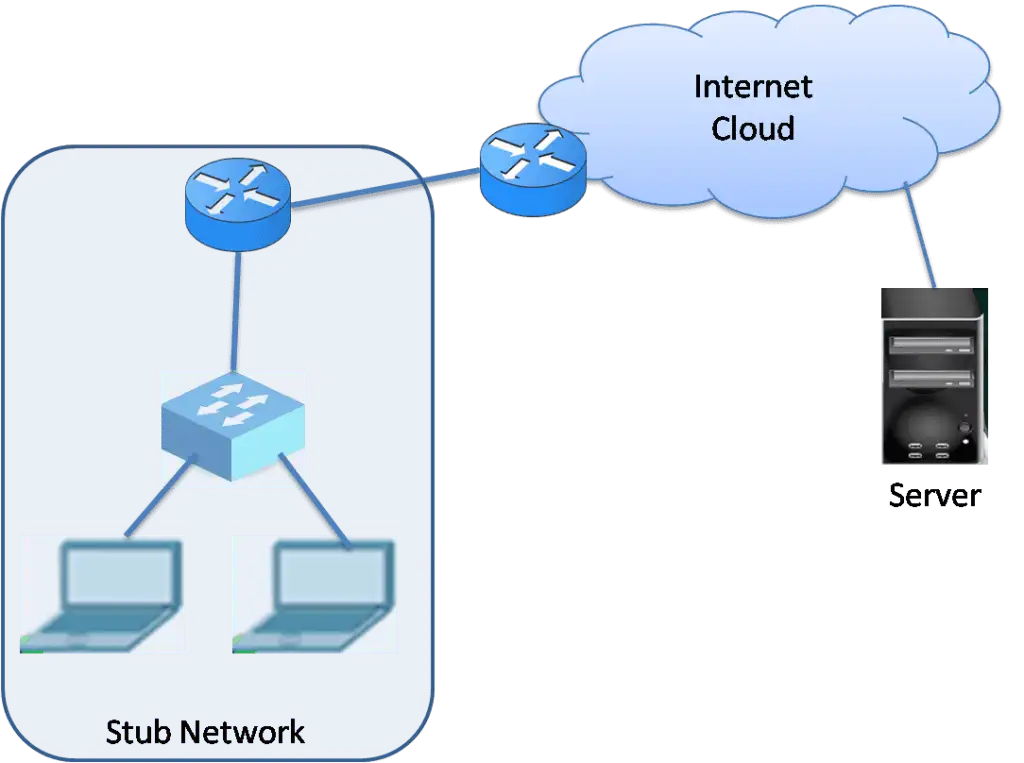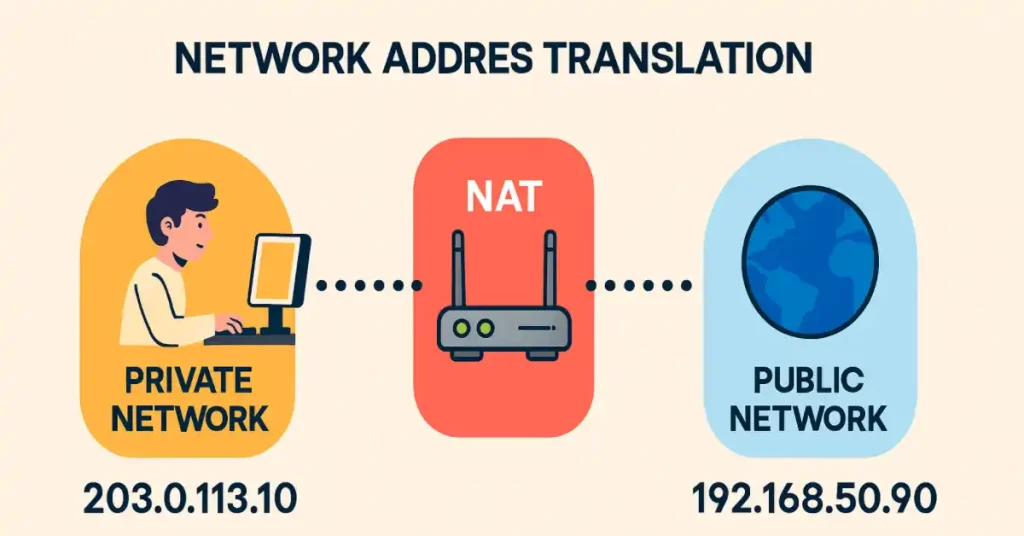All public IPv4 addresses must be registered with a Regional Internet Registry (RIR). The registered holder of a public Internet address can assign these addresses to a network device. There is a maximum of 4.3 billion IPv4 addresses available. Still, with the increase of personal computing and the beginning of the World Wide Web, it soon became clear that 4.3 billion IPv4 addresses would not be enough.
The long-term solution for the shortage was IPv6, but urgent solutions to address exhaustion were required. So, for the short term, the IETF implemented numerous solutions, including Network Address Translation (NAT), Port Address Translation, and RFC 1918 private IPv4 addresses.
Exam Topics:
- CCNA 200-301: 3.5 (Configure and verify NAT), 1.2 (IPv4 addressing)
- CCNP ENARSI 300-410: 3.2.b (NAT/PAT, NAT64, troubleshooting)
Quick Win: NAT is the bridge between RFC 1918 private networks and the public Internet. Learn inside/outside terminology, NAT types, and Cisco CLI configuration — all in one lab-ready guide.
RFC 1918 Private IPv4 Address Ranges
RFC 1918 defines non-routable private IP ranges reserved for internal networks. These addresses are not unique — millions of organizations use 192.168.1.0/24 — and are never advertised on the public Internet.
| Class | Private Range (RFC 1918) | CIDR Prefix | Usable Hosts | Subnet Example |
|---|---|---|---|---|
| A | 10.0.0.0 – 10.255.255.255 | 10.0.0.0/8 | 16,777,214 | 10.1.1.0/24 → 254 hosts |
| B | 172.16.0.0 – 172.31.255.255 | 172.16.0.0/12 | 1,048,574 | 172.16.10.0/23 → 510 hosts |
| C | 192.168.0.0 – 192.168.255.255 | 192.168.0.0/16 | 65,534 | 192.168.1.0/25 → 126 hosts |
Pro Tip (CCNA): The 10.0.0.0/8 block equals one full Class A — ideal for large enterprise headquarters.
Private IP addresses are used to communicate between devices within an organization locally and are routed over the Internet because they do not identify any single company or organization. To route a private IP address to the Internet, it must first be translated to a public address.
Network Address Translation (NAT) is the technique for translating private addresses to public addresses and vice versa. Network Address Translation (NAT) allows a device configured with a private IPv4 address to access network resources outside their private or local network.
The Internet is one big example of NAT. It is a valuable method of preserving public IPv4 addresses because we can use and share a single public IPv4 address with hundreds and thousands of private IPv4 addresses. NAT temporarily solves the exhaustion of IPv4 address space. The permanent solution to the exhaustion of IPv4 address space is the transition to IPv6. The figure below illustrates the NAT process.

What is Network Address Translation (NAT)?
Many users use Network Address Translation (NAT) most crucially to conserve public IPv4 addresses. NAT conserves public IPv4 addresses by allowing networks to use private IPv4 addresses internally and translating private IPv4 into a public address only when required. NAT hides internal private IPv4 addresses from an outside public network, which provides extra privacy and security to a network.
The router configured with NAT requires one or more public IPv4 addresses, which are known as the NAT pool. When an internal device sends traffic from the private IP address out of the network, the router configured with NAT translates the internal IPv4 address of the device into a public address from the NAT pool. When receiving the reply from outside to that public IPv4 address, the NAT-enabled router translates the public IPv4 address into a private IPv4 address.

A Network Address Translation (NAT) router is typically required at the border of a stub network. We have already discussed the stub network in one of my previous articles. It is a network providing only one way to its neighboring network, one way in, and one way out of the network. The figure below illustrates the stub network and NAT-enabled router.
When someone wants to communicate outside the stub networks, the device sends the packet to the border router, which is NAT-enabled. The NAT-enabled border router translates the private IPv4 address of the stub network into a public IPv4 address.

FAQs
What is the main purpose of Network Address Translation (NAT)?
NAT conserves public IPv4 addresses by allowing thousands of private devices to share one public IP. It translates private IPs to public when accessing the Internet and hides internal topology for security.
Why can’t private IPs be used directly on the Internet?
RFC 1918 private IPs (10.0.0.0/8, 172.16.0.0/12, 192.168.0.0/16) are not globally unique and are filtered by ISPs per BCP 38. NAT translates them to routable public IPs at the border router.
What is a NAT pool and when is it used?
A NAT pool is a range of public IPs configured on a router (e.g., 203.0.113.10–15). Used in dynamic NAT to map multiple private IPs without port overloading, common in enterprise environments.
What is a stub network in the context of NAT?
A stub network has only one exit path to the outside world. NAT is typically deployed on the border router of a stub network to translate all outbound traffic to a public IP before reaching the ISP.
How does PAT differ from basic NAT?
Basic NAT maps one private IP to one public IP. PAT (overload) maps many private IPs to one public IP using unique port numbers, enabling thousands of simultaneous connections (e.g., home Wi-Fi).





